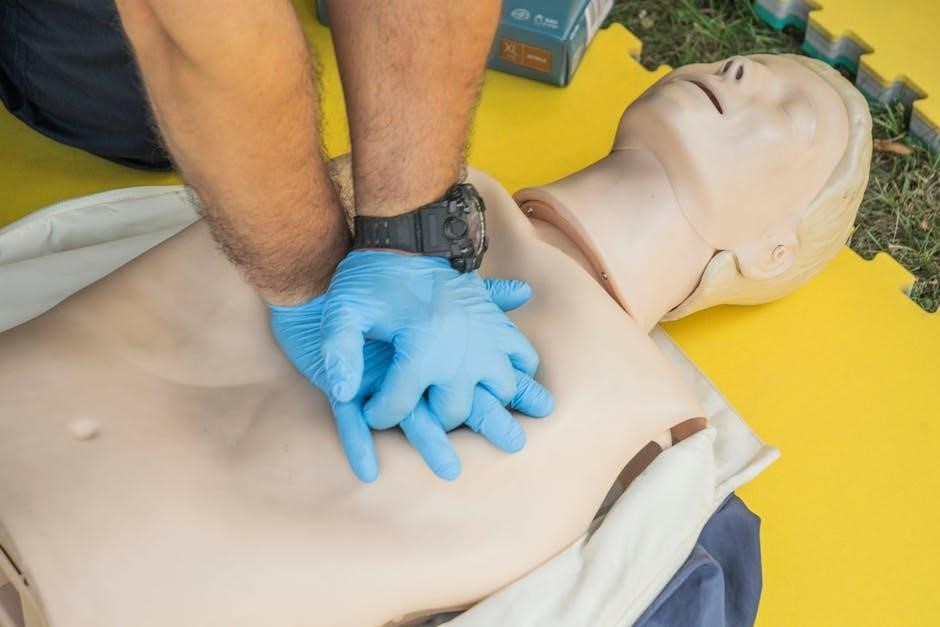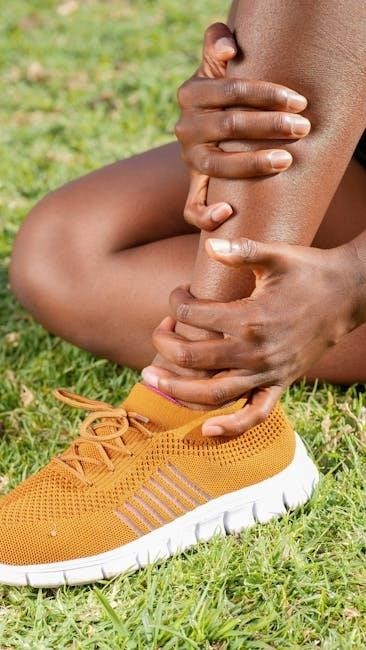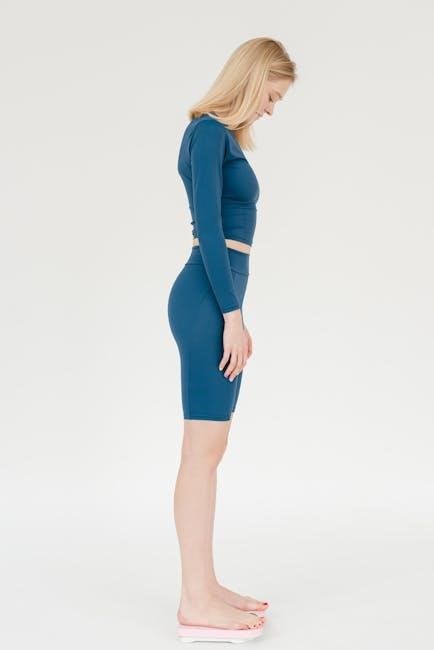How to Measure for Compression Stockings: A Comprehensive Guide
For a perfect fit, use measurement charts or individual made-to-measure products. Some providers offer PDF resources. Remember to consult relevant product guidance or the Sigvaris website. PrintFriendly.com offers editable PDF documents. Accurate measurements, ideally in the morning, ensure proper compression and therapeutic success.
Importance of Accurate Measurements
Accurate measurements are paramount when selecting compression stockings. Ill-fitting stockings can compromise their therapeutic efficacy. Proper fit ensures optimal compression, aiding blood circulation and alleviating symptoms like swelling and discomfort. Conversely, inaccurate measurements may lead to stockings that are either too tight, restricting blood flow and causing skin irritation, or too loose, rendering them ineffective in providing the necessary compression.
Compression garments are designed to apply graduated pressure, highest at the ankle and gradually decreasing towards the top of the stocking. This gradient is crucial for facilitating venous return and preventing blood from pooling in the lower legs. However, this graduated compression can only be achieved if the stockings fit correctly.
Moreover, accurately measured stockings enhance patient compliance. Comfortable and properly fitting stockings are more likely to be worn consistently, maximizing their benefits. Inaccurate measurements, on the other hand, can result in discomfort and discourage regular use, thus hindering the treatment process.
For those seeking made-to-measure stockings, precise measurements are even more critical. These custom-made garments are tailored to individual leg shapes and sizes, ensuring a perfect fit and optimal therapeutic outcomes. Accurate measurements are the foundation for achieving the desired compression level and overall comfort.
Tools Needed for Measuring
To ensure accurate measurements for compression stockings, gather the necessary tools before commencing the process. A flexible measuring tape is essential for capturing the circumference of your ankle, calf, and thigh, as well as the length of your leg. Opt for a tape measure with clear, easy-to-read markings in both inches and centimeters to accommodate different sizing charts.
A firm, flat surface to stand on is also crucial for obtaining precise measurements. Avoid measuring on soft or uneven surfaces, as this can distort your posture and affect the accuracy of your readings. A full-length mirror can be helpful for visually ensuring that the measuring tape is positioned correctly and that you are maintaining proper posture.
Furthermore, have a pen and paper or a digital device readily available to record your measurements as you take them. This will prevent you from forgetting the numbers and allow you to easily compare them to sizing charts. Consider printing out the sizing chart from the specific brand of compression stockings you are interested in, as sizing can vary between manufacturers.
Assistance from another person can be beneficial, especially when measuring the length of your leg or the circumference of your thigh. Having someone help you ensure that the tape measure is level and properly positioned can improve the accuracy of your measurements.
When to Measure (Time of Day)
The time of day you choose to measure your legs for compression stockings significantly impacts the accuracy of your measurements. Ideally, measurements should be taken early in the morning, before any significant swelling occurs in your legs. Throughout the day, gravity and prolonged periods of standing or sitting can cause fluid to accumulate in the lower extremities, leading to increased leg circumference.
Measuring your legs in the morning ensures that you are capturing their baseline size, providing a more accurate representation for selecting the correct compression stocking size. If you are unable to measure in the morning, consider taking measurements after a period of rest and elevation. Lie down with your legs elevated for at least 30 minutes to allow any accumulated fluid to redistribute.
Avoid measuring your legs immediately after exercise or any activity that causes them to swell. If you have a condition that causes significant leg swelling, such as lymphedema, consult with your doctor or a certified fitter to determine the best time to measure and the appropriate compression level for your needs. They may recommend measuring after a treatment session or after compression bandages have been applied.
Consistency is key when taking measurements. Always measure at the same time of day to ensure that you are comparing apples to apples. If you need to re-measure for any reason, try to do so under similar conditions to maintain accuracy.
Measuring Ankle Circumference
Measuring your ankle circumference accurately is a crucial step in determining the correct size of your compression stockings. The ankle measurement, often labeled as “cB” or “B” on sizing charts, is typically taken at the narrowest part of your ankle, just above the ankle bone (malleolus).

To begin, sit comfortably with your foot flat on the floor. Locate the narrowest point of your ankle, usually about half an inch above the bony prominence. Using a flexible measuring tape, gently wrap it around your ankle at this point. Ensure the tape is snug but not too tight, and that it lies flat against your skin without indenting it;
Read the measurement on the tape where it overlaps, making sure the tape is level and not twisted. Record this number in inches or centimeters, depending on the sizing chart you will be using. It is essential to maintain the correct tension on the tape measure to get an accurate reading. If you tighten the tape too much, the measurement will be smaller than your actual ankle circumference.
If you have difficulty measuring your ankle yourself, ask a friend or family member to assist you. You can also visit a medical supply store or a certified fitter who can take the measurements for you.
Measuring Calf Circumference
Accurately measuring your calf circumference is another essential step when fitting compression stockings. This measurement, typically labeled as “cC” or “C” on sizing charts, helps ensure that the stocking fits correctly around the fullest part of your calf, providing the appropriate level of compression.
To measure your calf circumference, sit with your feet flat on the floor. Locate the widest part of your calf muscle. This is usually about midway between your ankle and your knee. Using a flexible measuring tape, wrap it around your calf at this point, making sure the tape is level and lies flat against your skin.
Ensure the tape is snug but not too tight, and that it does not indent your skin. Read the measurement on the tape where it overlaps, making sure the tape is level and not twisted. Record this number in inches or centimeters, depending on the sizing chart you will be using.
It is important to take this measurement while your calf muscles are relaxed. Avoid flexing your calf, as this can cause the measurement to be larger than your actual circumference. If you have difficulty measuring your calf yourself, ask a friend or family member to assist you.
For the most accurate reading, take the measurement early in the morning before any swelling occurs in your legs. This will help ensure that your compression stockings fit comfortably and provide the desired therapeutic benefits.
Measuring Thigh Circumference (for Thigh-High Stockings)
When selecting thigh-high compression stockings, accurate thigh circumference measurement is crucial for a proper fit. This measurement, often denoted as “cG” or “T” on sizing charts, ensures the stocking comfortably and effectively applies compression to the upper leg.
To measure your thigh circumference, stand with your weight evenly distributed. Locate the widest part of your thigh. This is generally at the upper part of your thigh, near the groin. Using a flexible measuring tape, wrap it around your thigh at this point, ensuring the tape is level and snug, but not constricting.
The tape measure should be in direct contact with your skin, not over clothing, for an accurate reading. Ensure that the measuring tape remains parallel to the floor as you take the measurement. Record the measurement where the tape overlaps, noting the value in inches or centimeters, depending on the sizing chart being used.
If you find it challenging to maintain the tape’s position or read the measurement accurately by yourself, seek assistance from someone to ensure precision. It’s best to take this measurement in the morning before any swelling occurs.
This precise measurement will guide you in selecting the correct size of thigh-high compression stockings, promoting optimal blood circulation and therapeutic benefits. Refer to the manufacturer’s sizing chart using the girth of your thigh to match their recommended size.
Measuring Leg Length (Buttock to Heel)
Accurately measuring the leg length, specifically from the buttock fold to the heel, is essential for ensuring the proper fit and functionality of thigh-high compression stockings. This measurement, sometimes referred to as the “AD” measurement, determines the overall length of the stocking needed to provide appropriate compression throughout the leg.
To take this measurement, stand upright with your back straight and your weight evenly distributed. It’s best to have someone assist you for greater accuracy. Locate the gluteal fold (the crease where your buttock meets the back of your thigh). Place one end of the measuring tape at this point.
Extend the measuring tape down the back of your leg, following the natural curve, to the bottom of your heel. Ensure the tape is taut but not stretched. Record the measurement in inches or centimeters, depending on the sizing chart provided by the compression stocking manufacturer.
When measuring, make sure you are not wearing shoes. If measuring alone, standing in front of a full-length mirror can help ensure the tape measure stays in a straight line. It’s important to measure on bare skin, not over clothing, for the most accurate result.
This length measurement, combined with other circumference measurements, will enable you to select the correct size of thigh-high compression stockings, allowing for comfortable wear and effective compression therapy to promote healthy blood circulation.
Foot Length Measurement
Measuring foot length accurately is crucial, especially when selecting compression stockings that extend to or cover the foot. This measurement ensures the foot portion of the stocking fits comfortably without being too tight or too loose, which could compromise effectiveness and comfort. To measure foot length, you’ll need a measuring tape or ruler, a piece of paper, and a pen or pencil.
Place the paper flat against a wall on a hard surface. Stand with your heel against the wall and your foot flat on the paper. If you plan to wear socks with your compression stockings, wear similar socks while measuring. Trace the outline of your foot carefully, ensuring the pen or pencil is held vertically.
Measure from the back of your heel (the point touching the wall) to the tip of your longest toe. Use a ruler or measuring tape to determine this distance. Record the measurement in inches or centimeters. It’s best to measure both feet, as slight differences in size are common. Use the larger measurement when consulting the sizing chart.
Accurate foot length measurements are essential for proper fit, preventing discomfort and ensuring the compression stocking functions effectively.
Using a Sizing Chart
Once you’ve gathered all the necessary measurements—ankle circumference, calf circumference, thigh circumference (if applicable), leg length, and foot length—the next step is to consult a sizing chart. Sizing charts are provided by the manufacturers of compression stockings and are essential for determining the correct size based on your individual measurements. These charts can typically be found on the manufacturer’s website or included in product packaging as a PDF resource.
Each sizing chart will list measurement ranges for different sizes, such as small, medium, large, and extra-large. Locate the columns or rows corresponding to the measurements you’ve taken. Find the size that best fits all your measurements. In some cases, your measurements may fall into different size categories for different body parts. When this occurs, prioritize the calf and ankle measurements, as these are crucial for proper compression in the lower leg.
If you’re between sizes, it’s generally recommended to choose the larger size for better comfort. However, if you’re experiencing significant swelling, consult with a healthcare professional to ensure the best fit. Always refer to the specific sizing chart provided by the manufacturer, as sizing can vary between brands.
Using the sizing chart accurately is crucial for achieving the therapeutic benefits of compression stockings.
Differences in Sizing Charts Between Brands
It’s crucial to acknowledge that sizing charts for compression stockings can vary significantly between different brands and manufacturers. This means that a size medium in one brand may not be the same as a size medium in another. Therefore, it’s never safe to assume your size based on previous purchases or experiences with other brands. Always consult the specific sizing chart provided by the manufacturer of the compression stockings you intend to buy.
These variations can arise due to differences in manufacturing processes, materials used, and design considerations. Some brands may cater to specific body types or offer more customized fitting options. For instance, some brands may focus on a wider calf circumference, while others may prioritize length measurements.

Before making a purchase, carefully review the sizing chart, paying close attention to the measurement ranges provided for each size. Don’t hesitate to contact the manufacturer directly or consult with a healthcare professional if you have any questions or concerns about sizing. Many manufacturers also offer PDF resources or online guides to assist with the selection process.
Understanding these differences is essential for ensuring a proper fit and maximizing the therapeutic benefits of compression stockings.
Taking Measurements for Made-to-Measure Stockings
When standard sizes don’t suffice, made-to-measure compression stockings offer a personalized fit, crucial for optimal therapeutic benefits. This process demands precise measurements, often best performed by a trained professional at facilities like Soft Touch Mastectomy or through specialized services. Accurate measurements ensure the garment conforms perfectly to the individual’s unique leg shape and size.
Typically, a detailed measurement guide, potentially in PDF format, is provided by the manufacturer. This guide will outline specific points on the leg that need to be measured, including ankle circumference, calf circumference, thigh circumference (if applicable), and leg length. These measurements should be taken with the leg in a relaxed position, ideally in the morning before any swelling occurs.
In addition to standard circumference and length measurements, made-to-measure orders may require additional details such as foot length and specific anatomical landmarks. It’s imperative to follow the manufacturer’s instructions meticulously, ensuring the measuring tape is snug but not constricting.

The accuracy of these measurements directly impacts the effectiveness and comfort of the compression stockings. Consulting with a healthcare provider or certified fitter is highly recommended to guarantee precision and a well-fitting garment.
Where to Find Measurement Guides (PDF Resources)
Tips for Accurate Measurement
Achieving accurate measurements is paramount when selecting compression stockings. To begin, always measure early in the morning before any swelling accumulates in the legs, ensuring a more representative baseline. Using a flexible measuring tape is crucial; ensure it’s not stretched or damaged to avoid inaccuracies.
When taking circumferential measurements, maintain a consistent level of tension on the tape – snug but not constricting. The tape should lie flat against the skin, without digging in or leaving gaps. For length measurements, stand upright with your weight evenly distributed to ensure proper alignment.

Enlist assistance if possible, as measuring certain areas, like the thigh or buttock-to-heel length, can be challenging to do accurately on your own. Mark the measurement points with a pen or marker to ensure consistency if you need to remeasure.
Refer to the specific sizing chart provided by the manufacturer, as variations exist between brands. If your measurements fall between sizes, consult the manufacturer’s guidelines or seek advice from a healthcare professional.
Remember, accurate measurements are essential for optimal comfort and therapeutic effectiveness. If unsure, consider visiting a professional fitter for assistance.
